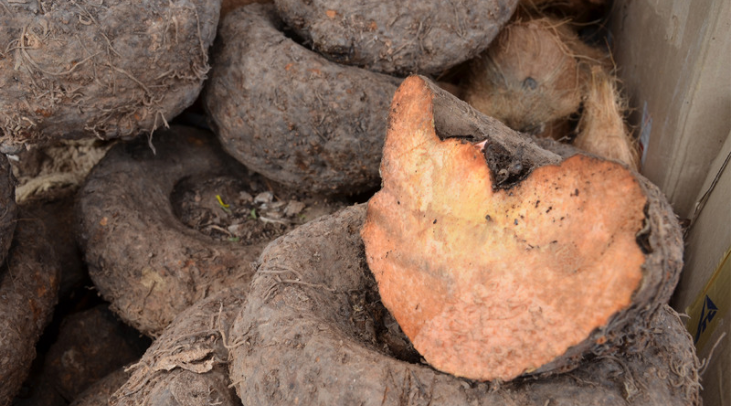India, recognized for its rich agricultural variety, has much to contribute to the global market. One of its lesser-known yet highly promising crops is Elephant Foot Yam (Amorphophallus paeoniifolius), often referred to as the “cousin of taro.” This tuber is gradually finding its way into international cuisine due to its versatility and impressive nutritional benefits.
Reasons for the Global Popularity of Elephant Foot Yam
1. Nutritional Richness
Elephant foot yam boasts a rich nutrient profile, offering high levels of dietary fiber, potassium, vitamin C, and antioxidants, appealing to health-conscious consumers. With a low glycemic index, it is ideal for diabetics, while its fiber content promotes digestive health and aids in weight management.
2. Culinary Flexibility
While this tuber is a staple in Indian cooking, its adaptability is leading to increased demand in international markets. It can be incorporated into soups, curries, stir-fries, or serve as a meat alternative in vegan dishes. Its unique earthy flavor and creamy texture are captivating global palates.
3. Medicinal Benefits
In Ayurveda, elephant foot yam is renowned for its health benefits, including assistance in managing piles, promoting gut health, and boosting immunity. These qualities make it a valued ingredient in health-oriented food products.
4. Sustainable Crop
This drought-resistant crop thrives in tropical conditions with minimal inputs, aligning with the global trend toward sustainable agriculture and eco-friendly food sourcing.
Export Viability of Elephant Foot Yam
As the demand for exotic and functional foods rises globally, elephant foot yam emerges as a promising export opportunity.
1. Increasing Demand in Asian and Western Regions
Countries such as Malaysia, Indonesia, Japan, and Thailand have long valued yams. Simultaneously, Western markets are showing growing interest, with chefs and food enthusiasts eager to experiment with this distinct ingredient.
2. India’s Leading Production
India stands as the largest producer of elephant foot yam, particularly in states like Kerala, Andhra Pradesh, and Assam. Its plentiful supply positions India as a significant player in the global market.
3. Processed Export Products
In addition to fresh yam, processed variants like frozen slices, yam flour, and dehydrated chips are becoming popular due to their extended shelf life and convenience.
4. Health Food Market
The health and wellness sector is increasingly integrating elephant foot yam into ready-to-eat meals and functional foods, providing another export channel.
Challenges in Exporting Elephant Foot Yam
- Perishability: Proper storage, cold chain logistics, and timely transportation are vital for preserving freshness.
- Adherence to Global Standards: Compliance with food safety and pesticide residue regulations is essential for successful exports.
- Awareness and Marketing: Increasing knowledge about its benefits and positioning it as a premium product can facilitate entry into high-value markets.
Strategies to Maximize Export Opportunities
1. Implementing Advanced Technologies
Utilizing cold storage, freeze-drying, and vacuum-packing can extend shelf life and enhance quality, making the product more attractive to international buyers.
2. Collaboration with Farmers
Providing local farmers with training on international agricultural standards and sustainable practices will help ensure the production of high-quality products.
3. Government Support and Incentives
Exporters can access governmental programs like APEDA for financial support, market enhancement, and participation in global trade fairs.
4. Strategic Branding and Marketing
Promoting the nutritional and medicinal benefits of elephant foot yam through social media, food expos, and collaborations with health-oriented brands can boost demand.
Elephant foot yam possesses significant potential as India seeks new avenues in agricultural exports. Its unique blend of health attributes, sustainability, and culinary adaptability makes it a promising product for global markets. By addressing logistical challenges and empowering farmers, India can establish itself as the leading exporter of this “hidden gem” among tubers.Now is the time to seize this remarkable opportunity and position elephant foot yam as a global favorite!

